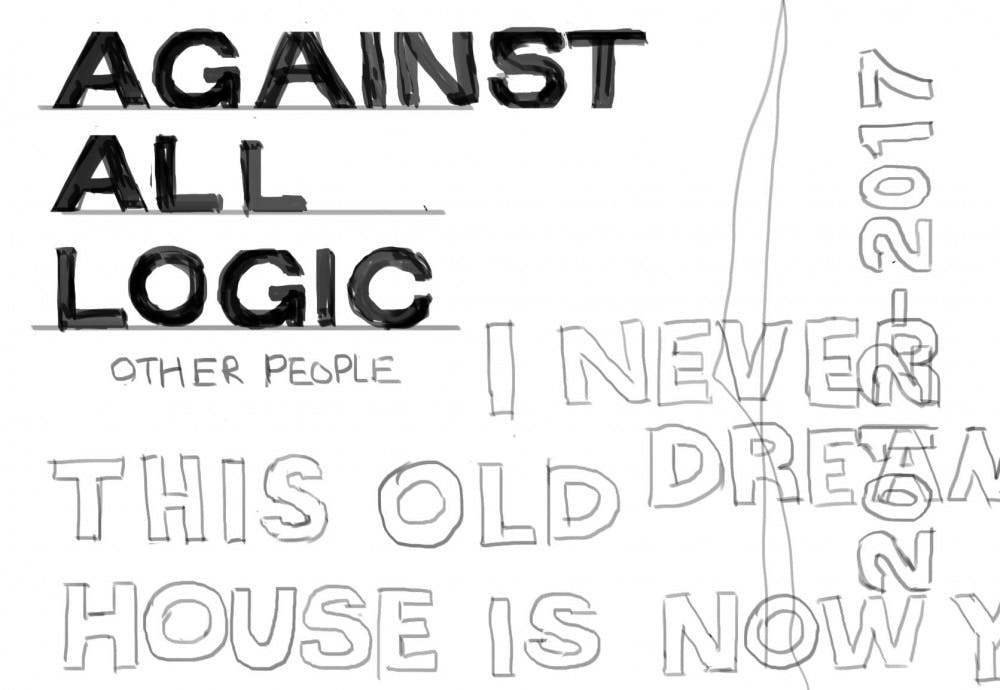Being against house music is as easy as it is difficult. It is repetitive, frequently building off of a classic 128 bpm drum beat that bumps the prototypical “unts unts unts.” Its artists are young hipsters who ‘understand’ music at a level that ‘the rest’ just do not seem to understand. Hell, if you aren’t into house music, you probably are accused of not truly feeling music, that internal energy that builds up in the ravers of old German basement nightclubs, which ‘for–sure’ has no connection to the copious amounts of MDMA consumed. Or at least that is the stereotype.
On the surface, house is as pretentious as it is complex, a conundrum that has left many, including myself, weary of exploring the genre to any extent more than the muffled outdoor sounds of massive speakers during failed attempts at entry into nightclubs. But, when you remove the pretentious mask, what isn’t there to like about house? Chill beats that fill the room but don’t consume it; an environment where you could carelessly sway left and right or choose a nice wall to intimately discuss the intricacies of anime soundtracks without having to awkwardly scream into the recipient's ears.
It is not like the ballads of rockstars, where every line is meant for contemplation, the sharpness of hip–hop, or even the story arc nature of today’s EDM music. House music seems to have one goal: get you dancing, and unexplainably keep you in that moment for the rest of the evening. Who has a problem with that? To love house as a music enthusiast is to admit to enjoying the simplicity of songs at the same level as others you deem unequivocally more complex, a paradox puzzling listeners.
Upon discovering Against All Logic’s (A.A.L) 2012–2017 album released last month, the veiled paradox that is loving house music began to lift. The project is a creation of Nicolas Jaar, one of house music’s prodigies. Raised in New York by Chilean artists, Jaar became extremely familiar with the city’s club scene at a young age, quickly assimilating into the art of spinning records, though at a much slower tempo than that of his peers. His style of taking the classic upbeat of house and combining it with Latin Jazz roots created a sound that put him on the list of one of the best live–acts to see in house music among a plethora of strong album reviews and constant praise throughout the underground music world for the past six years.
2012-2017 is a compilation of songs created during that period, previously unreleased but recognized by fans of his performances. What makes this album so unique is how stark of a contrast it has to the common perceptions of house: its songs are intricately layered, full of unrecognizable instruments, Motown–soul sampling, that is constantly developing and divesting upon the formula it seems to lay out for itself. Just when it seems like you finally understand where the song is going, figuring out how you should move to the beat, it changes the tempo, throwing your body into a whirlwind of confusion as you miraculously find your footing.
This is not what we’ve been told house is supposed to do. House is supposed to be one long continuous beat, one in which you can enter at any time with ease, that is more about the mood than it is about the sound. A.A.L shows the listener that house is much more than a simple beat, that it is a tapestry of sound, woven together to direct the audience into whatever way it feels best creates a dancing mood.
I became obsessed with Against All Logic. Even the name is a testament to how it defies my previous assumptions about house. The album starts with a massive boom of horns coupled with an apostle–like choir that leads into one of the funkiest guitar riffs I have ever heard on “This Old House Is All I Have” and had me shuffling in my seat. I became entranced with the fun melodies of “I Never Dream” and the weirdness of misconstrued Yeezus samples on “You Are Going To Love Me And Scream.” It seemed like nothing was off limits to Jaar; whatever it took to get the listener moving was fair game.
The album turned me into a sponge for the past week, absorbing any and everything house. The Boiler Room sets became my daily soundtrack, Burial became my study music, and Nina Kraviz blasted in between cuts of Honey Dijon as my friends pre–gamed for St. Patrick's Day. As someone who admittedly dislikes most electronic music, I was surprised to find myself drowning in this new world of music.
What A.A.L has taught me is that house is a form of musical expression that is equally complex and gratifying. The lack of jarring drops, substituted for developments on backbone drum beats, is a relief in a current music environment in which every electronic song is built off of the same formula. It makes you just feel, without having to look too deeply into the meaning, or even the process behind it. The listener can close their eyes and sway for hours on end, taking in the sound without ever having to question the DJ’s next move. It puts you under the thumb of a person you want to hate for everything they represent in hipster culture but end up loving for the jams they produce so seamlessly. The music sounds full, a creation of a new environment within walls of clubs unapologetically empty. It is jams that have no basis in favorite songs, but rather styles, a sharp contrast to the tailored Discover Weekly playlists of bangers. It’s everything most music is not, yet carries with it a sound so familiar.
In short, house music is underrated. A quick listen to 2012–2017 will show the American listener how slept on this genre is. It is time we step out of the EDM/hip–hop bubble and feel the vibes of some great stand–alone beats. Then, maybe some deep house late nights will be more prevalent.







